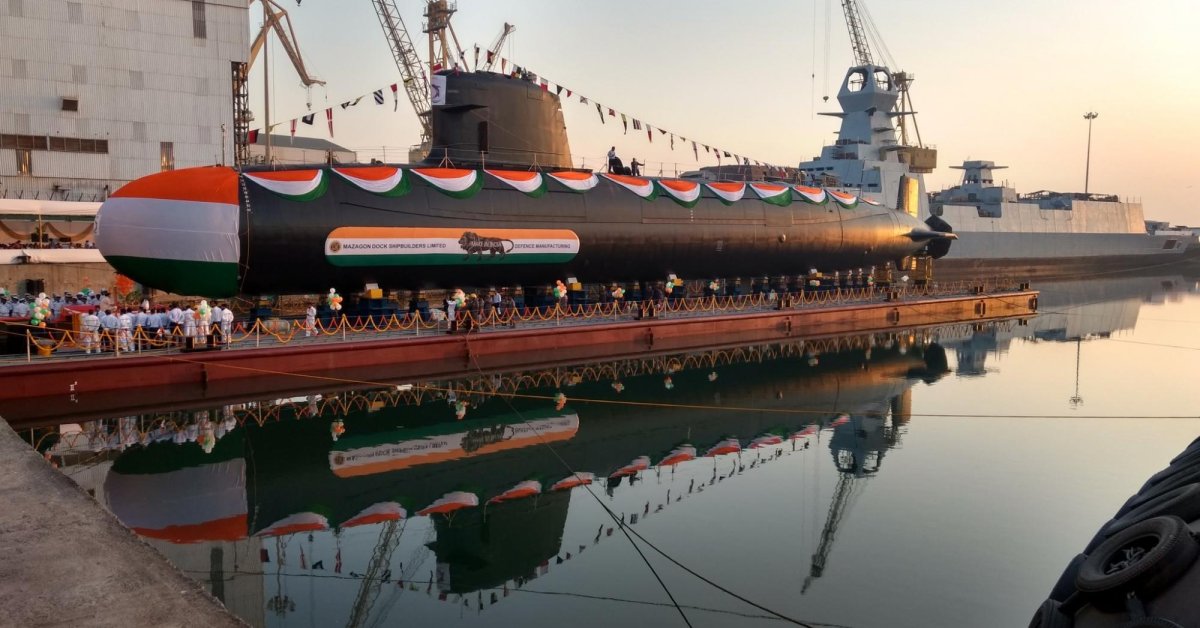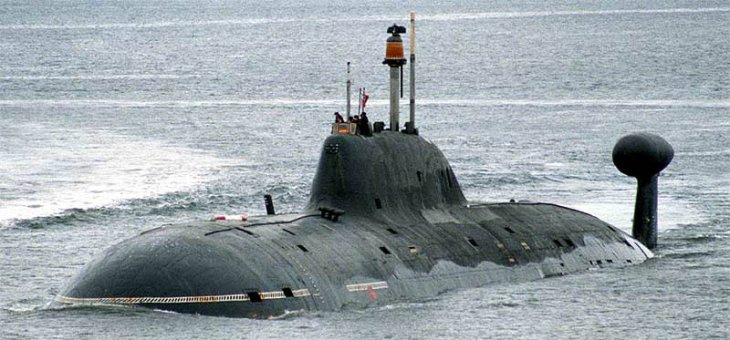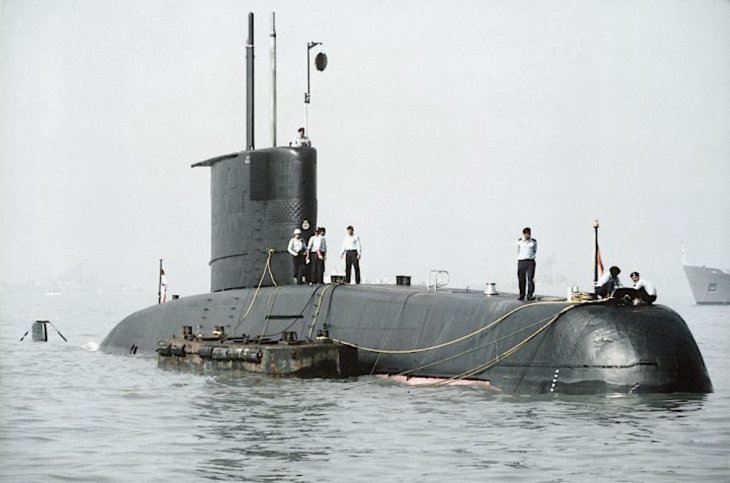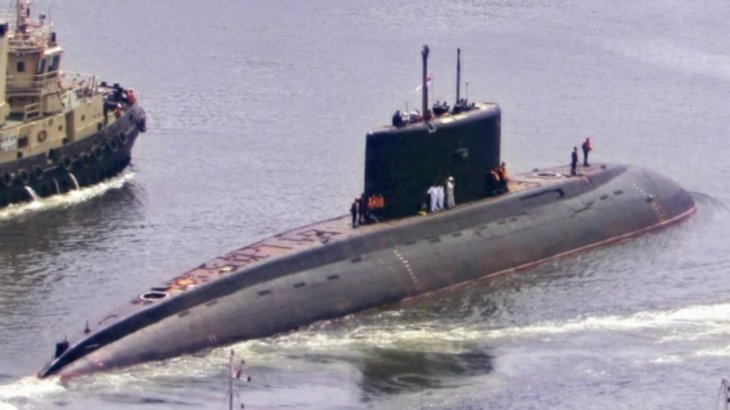These Submarines Are Contributing To The Strength Of The Indian Army
Dhir Acharya - Jun 03, 2019

Over the years, India has built for itself a strong army to protect its country. And the following submarines help contribute to creating that strength.
- List Of Top 10 Most Popular Guns Of The Indian Army
- Delhi Is The World’s Most Polluted Capital City For Three Years In A Row
- Indian Farmers Install High-Tech, Night-Vision CCTV Cameras To Protect Themselves
Over the years, India has built for itself a strong army to protect its country and as a warning that other enemies' better stay away. And the following submarines, which are in use, help contribute to creating that strength.
Akula-class submarine
This is a series of attack submarines that operate on nuclear power, which the Soviet Navy first deployed in 1986. Akula consists of four sub-classes, which are the original Project 971 (Akula I), Project 971ls (Improved Akula I), Project 971U (Akula II), and Project 971M (Akula III).
India signed a 10-year lease for Akula II with Russia in 2012, in which when the lease ends, the country has the option to buy them. K-157 Vepr is the only completed Akula II, which is 113 meters long, 12,770 tonnes heavy. Compared with the Akula I, there is additional space for more quieting measures and it uses MGK-540 Skat-3 sonar system.

The Indian Navy sent 300 personnel to Russia for training on the operation of Nerpa, the submarine of the Akula II. While the version of the Russian Navy could house 28 nuclear-capable cruise missiles and cover a range of 3,000 kilometers, the version used by the Indian Navy covers only 300 kilometers with its Club-S nuclear-capable missiles.
Earlier this year, on March 7, the two countries signed a $3 billion deal where India will lease another Akula submarine. It is expected that Russia will send the Chakra III to the Indian Navy by 2025.
Arihant-class submarine
This is a class of nuclear-powered ballistic missile submarines built for the Indian Navy under the Rs 9,000 crore ATV project, whose aim was to design and produce submarines operating on nuclear power for the Indian army.

INS Arihant, the lead vessel of this class, was launched in 2009, which was confirmed to be commissioned in 2016 after extensive sea trials. This is the first ballistic missile submarine that hasn’t been built by a member in the United Nations Security Council.
The submarines measure 112 meters in length, 11 meters at their largest width, and 10 meters in draught. They weigh 6,000 tonnes and can dive as deep as 300 meters. They can load 95 people, including sailors and officers. Each submarine houses a seven-blade 83W propeller, helping them reach the maximum speed of between 22 and 28 km/h (12-15 knots).
Shishumart-class submarine
This class includes diesel-electric attack submarines, which are longer and heavier than India’s variant of the Type 209 submarines which German HDW developed under the internal designation Type 1500.

The class includes the INS Shishumar (S44), INS Shankunsh (S45), INS Shalki (S46), and INS Shankul (S47). While HDW built the first two vessels at Kiel, the others were built under a tech transfer agreement at MDL, Mumbai. They were commissioned from 1986 to 1994. They are 1,850 tonnes heavy and can reach a speed of 41 kilometers per hour (21 knots).
Kalvari-class submarine
Like the former class, this one is a diesel-electric attack submarine built for the Indian Navy and based on the Scorpène-class submarine. Dubbed after the first submarines that the Indian Navy inducted. The French naval defense and energy company DCNS designed these submarines and Mumbai-based Mazagon Dock Limited was responsible for manufacturing them.
The submarines of this class can offend against the whole spectrum of naval warfare, which includes area surveillance, mine laying, intelligence gathering, anti-submarine warfare, and anti-surface warfare.

The length is 67.5 meters, the height is 12.3 meters, the beam is 6.2 meters and the draught is 5.8 meters. The class can move at 20km/h (11 knots) at its fastest. When surfaces, it can cover a range of 12,000 kilometers at 15km/h (8 knots).
The class houses Weapons Launching Tubes (WLT) that can pack weapons allowing reloading at sea. It also comes with six torpedo tubes measuring 53 mm to form an 18 heavyweight wire-guided SUT torpedoes made in Germany as well as SM39 Exocet anti-ship missiles. Each submarine of this class can carry 42 people including 35 sailors and 8 officers.
Sindhughosh-class submarine

This class of submarines was design under Project 877, following a contract between the Ministry of Defence (India) and Rosvooruzhenie. There are nine submarines in total, namely the INS Sindhurashtra (S65), INS Sindhuvijay (S62), INS Sindhukirti (S61), INS Sindhukesari (S60), Sindhuratna (S59), INS Sindhuvir (S58), INS Sindhuraj (S57), INS Sindhudhvaj (S56), and INS Sindhughosh (S55).
The weight of each submarine is 3,000 tonnes, the length is 72.6 meters, the largest width is 9.9 meters, and the draught is 6.6 meters. They can dive as deep as 300 meters, and move at 18 knots at the fastest. In addition, each of them can carry a 53-person crew and operate solo for 45 days.
Featured Stories

Features - Jul 01, 2025
What Are The Fastest Passenger Vehicles Ever Created?

Features - Jun 25, 2025
Japan Hydrogen Breakthrough: Scientists Crack the Clean Energy Code with...

ICT News - Jun 25, 2025
AI Intimidation Tactics: CEOs Turn Flawed Technology Into Employee Fear Machine

Review - Jun 25, 2025
Windows 11 Problems: Is Microsoft's "Best" OS Actually Getting Worse?

Features - Jun 22, 2025
Telegram Founder Pavel Durov Plans to Split $14 Billion Fortune Among 106 Children

ICT News - Jun 22, 2025
Neuralink Telepathy Chip Enables Quadriplegic Rob Greiner to Control Games with...

Features - Jun 21, 2025
This Over $100 Bottle Has Nothing But Fresh Air Inside

Features - Jun 18, 2025
Best Mobile VPN Apps for Gaming 2025: Complete Guide

Features - Jun 18, 2025
A Math Formula Tells Us How Long Everything Will Live

Features - Jun 16, 2025
Comments
Sort by Newest | Popular